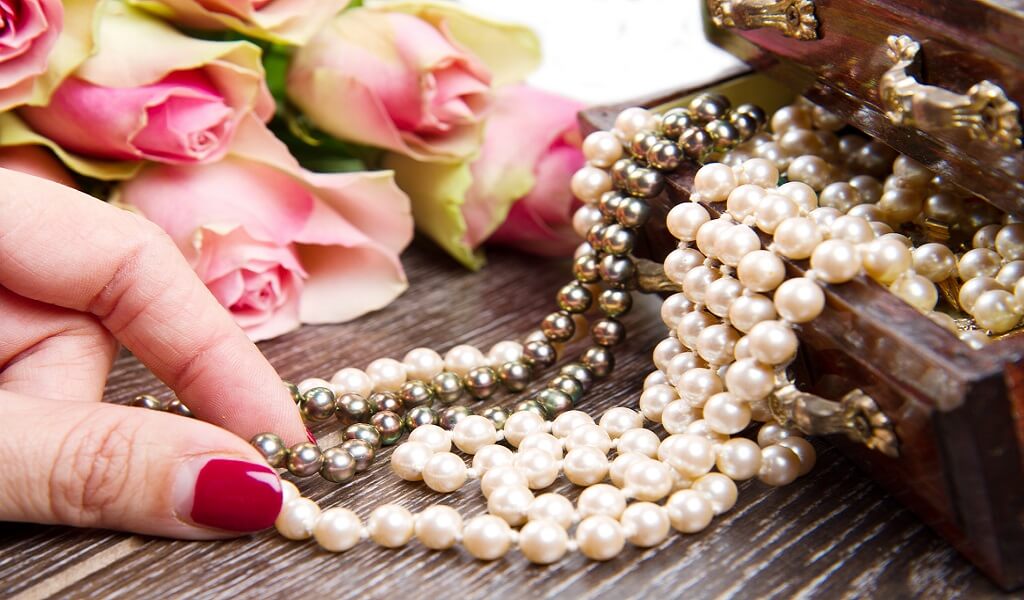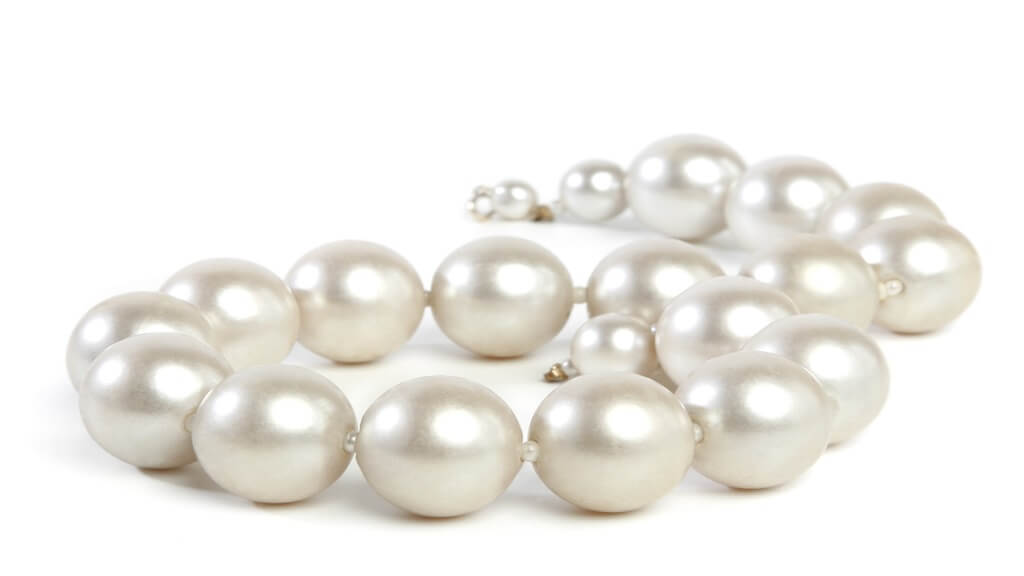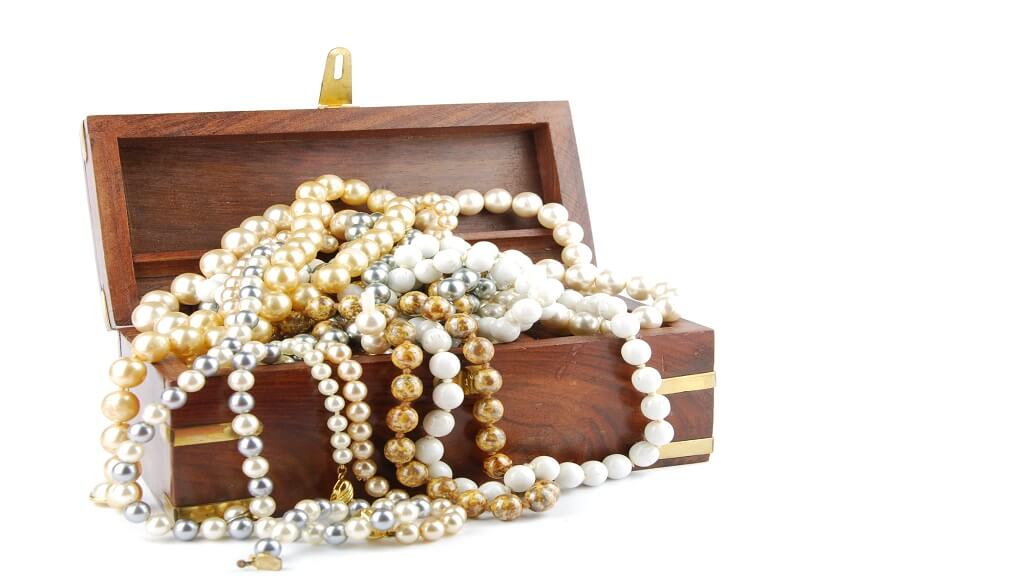Pearls are elegant, pearls are attractive, and if they’re genuine, pearls are extremely valuable.
With so many fake pearls now being manufactured, identifying genuine vintage pearl necklaces can be difficult. A great tip for doing so is examining the clasp of the jewelry.
A lot of pearl necklaces from the 1920s or so would feature a fishhook clasp.
They get their name from the fact that one side of the clasp is shaped like a fishhook. The other side is typically an oval.
If your string of pearls features a round clasp, it is also very likely to be vintage. A round clasp is very similar to a box clasp, except it is circular, rather than box-shaped.
On the other side of the spectrum, if you own a piece of pearl jewelry that you believe to be vintage, check whether it has a lobster claw clasp.
If it does, unfortunately, your pearls are not vintage. Lobster claw clasps get their name from the fact that they are shaped like a lobster’s claw.
They were invented in 1996 and are considered fairly modern.
Vintage pearl necklace Identification
Do real pearls peel?
Yes, real pearls do peel.
Because pearls are made up of layer upon layer of nacre, real pearls are susceptible to peeling.
If your pearls are especially thin, if they’re exposed to any harsh chemicals or solutions, or if they are dropped or damaged, layers of nacre can peel away from the surface of the pearl.
The last thing you want is for your beautiful pearls to become chipped and to start peeling away.
So be sure to take good care of them, store them properly, and maintain them correctly.
How To Tell If a Pearl is Real or Fake?
Are real pearls heavy or light?
They say that imitation is the finest form of flattery. For real pearls, that is definitely the case because the market is flooded with fake, or ‘imitation’ pearl jewelry.
Fake pearls are man-made beads and are typically made from glass, ceramic, plastic, shells, or alabaster.

They’re given an artificial coating to give them a pearl-like appearance, but they simply aren’t pearls.
Cultured pearls are the real deal. Sure, they’re man-made, but they are still pearl.
With so many different fakes out there, telling the difference between genuine pearls and fake pearls can be tricky.
Another great way of identifying real pearls is to check their weight.
Most real pearls will feel heavy and are certainly heavier compared with most fakes because they have more density.
To check the weight, pick the jewelry up and carefully bounce a couple of the pearls in your hand to see how heavy they feel.
What color are real pearls?

Because there are so many different types of pearls out there, different pearls appear in different ways.
When most people think of real pearls, they think of the classic white and cream colors. Some pearls do indeed have these colors, though not all.
South Sea pearls, for example, are usually larger than average and feature a beautiful golden yellow hue.
Tahitian pearls vary in shape, but these are usually much darker hued and can be grey, dark blue, silver, or black.
In fact, the clue is in the name as some people refer to these as ‘Black Pearls’.
Akoya saltwater pearls are extremely rare and are therefore very valuable.
These are your classic pearls, spherical in shape, very shiny, and white and/or cream colored.
Freshwater pearls are typically duller than saltwater, so are usually dyed to make them appear shinier.
How can you tell if a pearl is freshwater or saltwater?

Pearls are a timeless classic that can lend themselves to any style. Considered the ultimate fashion accessory, pearls come in all shapes and sizes.
It also turns out that pearls can vary depending on what type of water they were produced in.
Pearls are made by mollusks (oysters in saltwater, and mussels in freshwater) as a self-defense mechanism against parasites and irritants attempting to invade their bodies.
These mollusks secrete layers of substances known as conchiolin, and aragonite, which are the same materials that form their shells.
Combining these substances creates a new material known as nacre, which people also refer to as the ‘mother of pearl.
The nacre traps the parasite or irritant and encases it, creating a beautiful prison for the irritant, in the form of a pearl.
Both freshwater and saltwater pearls are very rare in the wild, so most pearl jewelry out there is made from cultured pearls, made commercially by humans.
Cultured pearls can still be extremely valuable and still look just as stunning.
Freshwater pearls are much thicker than saltwater, as they are typically around 100% nacre.

They are also cheaper than saltwater pearls because saltwater are rarer and are therefore more valuable.
Saltwater pearls have a deeper shimmer and shine than freshwater because they’re thinner.
Freshwater pearls are usually dyed to help give them a bright and shiny look.
You should also pay attention to the shape.
A freshwater pearl is usually more of an oblong shape, compared with saltwater pearls, which tend to be more spherical in shape.
Are saltwater pearls more valuable than freshwater pearls?
Yes, saltwater pearls are generally more valuable than freshwater pearls.
In the wild, saltwater pearls are far rarer than freshwater pearls.
Because of their scarcity, they are much more expensive and are considered more valuable than freshwater pearls.



